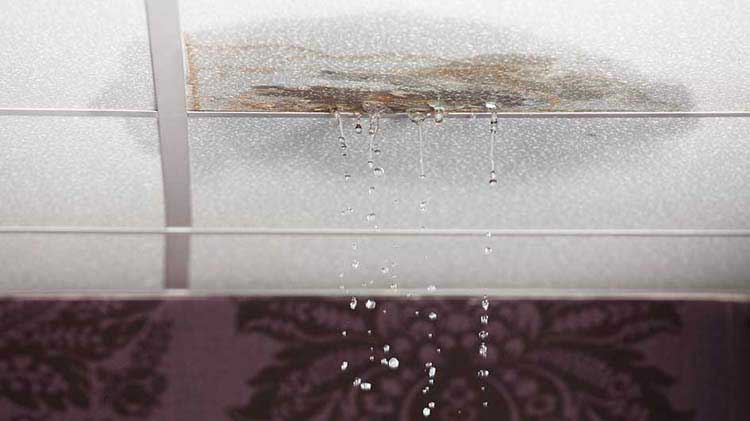Unveiling the Primary Sources of Leakage Within Your Home
Unveiling the Primary Sources of Leakage Within Your Home
Blog Article
What're your thoughts about How to detect water leaks in your home?

Leaks not just cause waste of water however can also create unnecessary damage to your home and also advertise undesirable natural development. By looking and also recognizing for daily situations that trigger leaks, you can protect your residence from future leaks as well as unneeded damages.
Immediate temperature adjustments.
Extreme temperature changes in our pipelines can trigger them to broaden and also acquire all of a sudden. This growth and contraction may cause fractures in the pipelines, specifically if the temperature level are below freezing.
Rusty water systems
This may be the reason of staining or bending on your water pipelines. If our plumbing system is old, take into consideration replacing the pipes given that they are at a greater danger of rust than the newer versions.
Malfunctioning Pipe Joints
The factor at which your pipes attach is regularly the weakest web link in the waterline. Pipeline joints can degrade with time, resulting in water leakages. Regrettably, the majority of pipeline joints are not easily noticeable. If you have loud pipelines that make ticking or banging sounds, specifically when the warm water is activated, your pipeline joints are most likely under a lot of stress. It is recommended to have your plumber examine your system once a year.
Intruding roots
A lot of water leaks start outside the house instead of inside it. If you see an abrupt decline in water stress, state in your tap, take some time to go out and examine your yard. You could see damp spots or sinkholes in your yard, and that may mean that tree origins are invading water lines triggering water to permeate out. You can have your plumber check for intrusion, particularly if you have trees or hedges near your residential or commercial property.
Poor Water Connectors
At times, a leak can be triggered by loose tubes as well as pipes that supply your home appliances. In instance of a water links leakage, you might observe water running straight from the supply line or puddles around your home appliances.
Blocked Drains
Clogged drains might be annoying and inconveniencing, however they can often wind up creating an overflow leading to rupture pipelines. Keep eliminating any kind of materials that might decrease your drains pipes that could obstruct them to prevent such aggravations.
All the above are causes of leaks yet not all water leaks result from plumbing leakages; some leakages could originate from roofing leaks. All leaks should be fixed right away to stay clear of water damages.
Leaks not just cause waste of water however can also trigger unneeded damage to your house as well as advertise unwanted natural growth. By looking and also understanding for daily situations that create leakages, you can shield your residence from future leakages and also unnecessary damage. Today, we will look at 6 leakage triggers that might be causing your pipelines to leak.
At times, a leakage can be triggered by loose pipes as well as pipes that supply your devices. In situation of a water connections leak, you may observe water running straight from the supply line or puddles around your home appliances.
How To Check For Water Leak In Your Home
How To Check for Leaks
The average household's leaks can account for nearly 10,000 gallons of water wasted every year and ten percent of homes have leaks that waste 90 gallons or more per day. Common types of leaks found in the home are worn toilet flappers, dripping faucets, and other leaking valves. These types of leaks are often easy to fix, requiring only a few tools and hardware that can pay for themselves in water savings. Fixing easily corrected household water leaks can save homeowners about 10 percent on their water bills.
To check for leaks in your home, you first need to determine whether you're wasting water and then identify the source of the leak. Here are some tips for finding leaks:
Take a look at your water usage during a colder month, such as January or February. If a family of four exceeds 12,000 gallons per month, there are serious leaks.
Check your water meter before and after a two-hour period when no water is being used. If the meter changes at all, you probably have a leak.
Identify toilet leaks by placing a drop of food coloring in the toilet tank. If any color shows up in the bowl after 10 minutes, you have a leak. (Be sure to flush immediately after the experiment to avoid staining the tank.)
Examine faucet gaskets and pipe fittings for any water on the outside of the pipe to check for surface leaks.
Undetected water leaks can happen without the home or business owner even realizing. If you suspect a water leak, but not able to find the source. It is time to contact a professional water leak detection service, The Leak Doctor.
How To Find a Water Leak In Your Home
https://www.leakdoctor.com/blog/How-To-Check-For-Water-Leak-In-Your-Home_AE197.html

I found that piece of writing about Most Common Causes of Leaky Pipes while doing a search on the internet. Sharing is caring. You just don't know, you may very well be helping someone out. Thank-you for your time invested reading it.
Quality solution? Call. Report this page